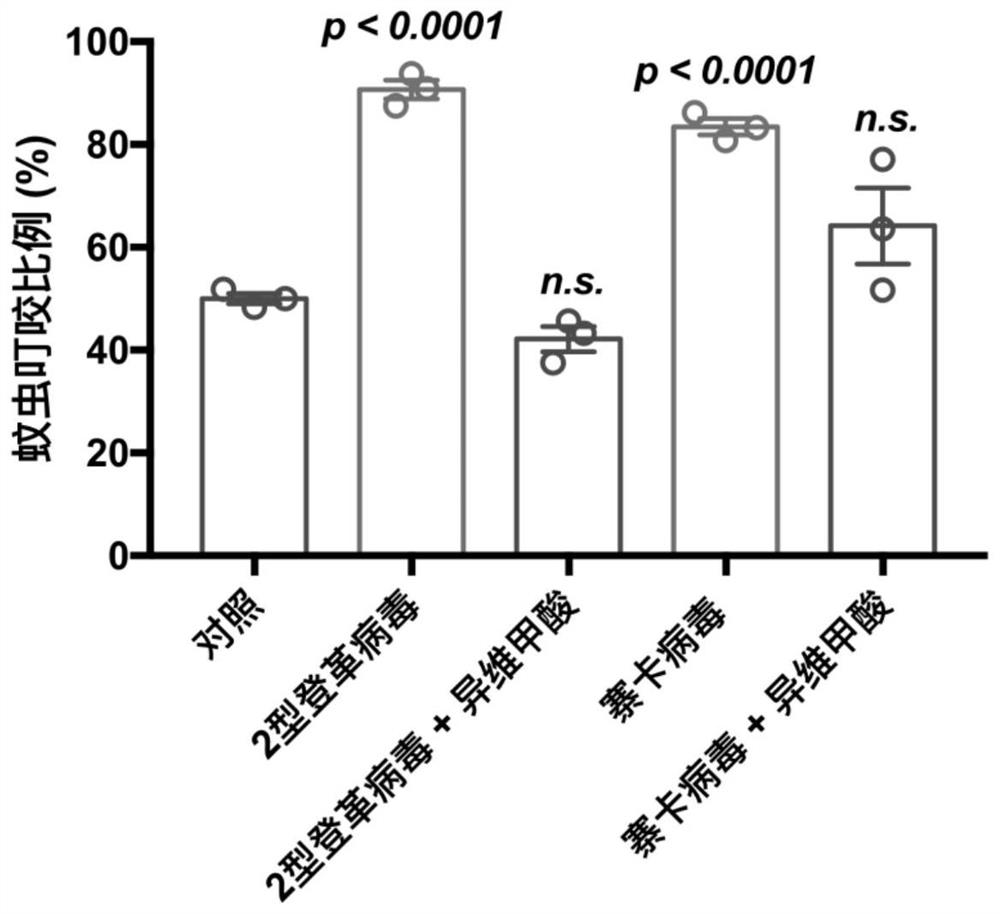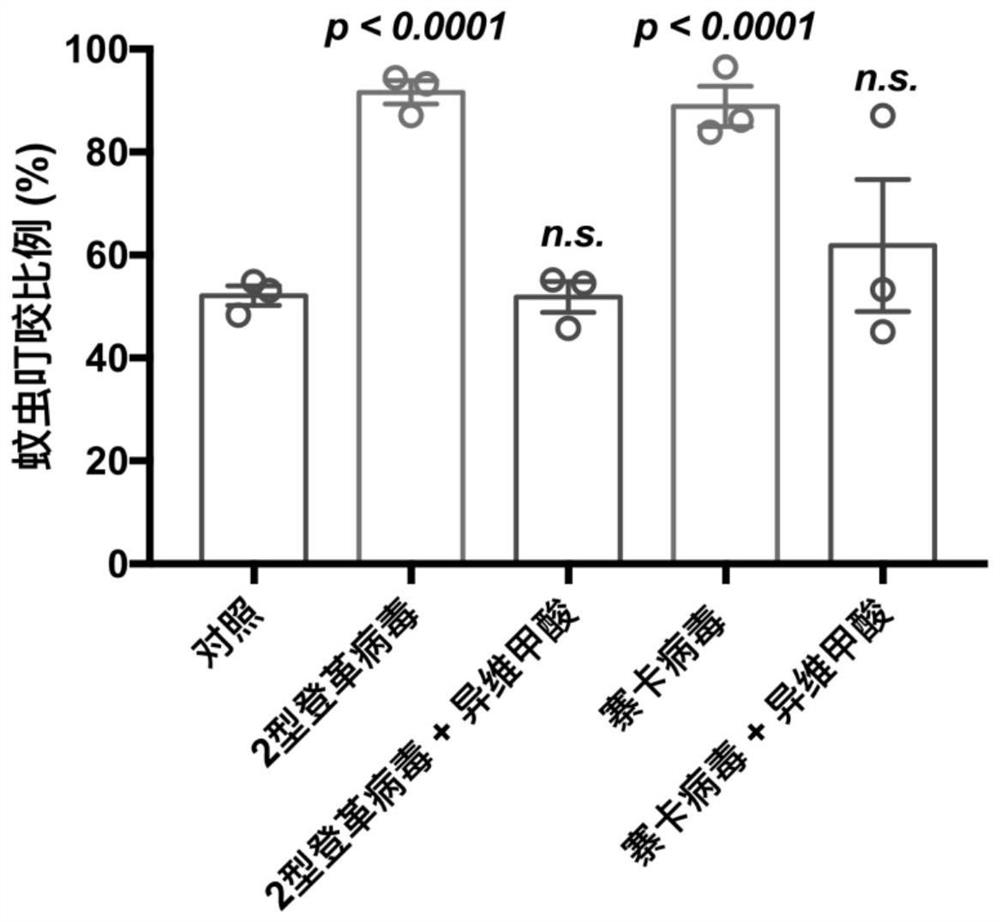Application and method of isoretinoic acid in preparation of product for controlling transmission of arthroviruses
An arbovirus and isotretinoin technology, applied in the field of biomedicine, can solve the problems that have not been found in the research or report of isotretinoin to reduce or block arboviruses, achieve inhibition or block transmission, reduce contact, and inhibit easy Sensual effect
- Summary
- Abstract
- Description
- Claims
- Application Information
AI Technical Summary
Problems solved by technology
Method used
Image
Examples
Embodiment
[0067] The following examples further illustrate the present invention, but are not intended to limit the present invention. Specific materials used in embodiments of the present invention and their sources are provided below. However, it should be understood that these are merely exemplary and are not intended to limit the present invention, and materials with the same or similar types, models, qualities, properties or functions as the following reagents and instruments can be used to implement the present invention. The experimental methods used in the following examples are conventional methods unless otherwise specified. The materials, reagents, etc. used in the following examples can be obtained from commercial sources unless otherwise specified.
[0068] 1. Experimental materials
[0069] Aedes aegypti used in the following examples is in the document "Colpitts™ etal. Alterations in the Aedes aegypti Transcriptome during Infection with WestNile, Dengue and Yellow Fever...
Embodiment 1
[0094] Example 1: Oral administration of isotretinoin to mice infected with dengue virus or Zika virus will significantly reduce the proportion of mosquito bites in mice.
[0095] Mice infected with dengue type 2 virus (DENV2) or Zika virus (ZIKV) were given isotretinoin by gavage at a dose of 1 mg / mice / day in 10% DMSO mixed with corn Oil, administered for three consecutive days after infection. On the third, fourth, and fifth days of dengue virus or Zika virus infection in mice, mosquitoes were allowed to conduct mouse-biting experiments, respectively, and the number of mosquitoes biting normal mice, infected mice, and infected mice was calculated. (number of successful blood-sucking mosquitoes / total number of mosquitoes released). Three mice were used in each group of experiments, and the total number of mosquitoes released by each mouse was 22-36.
[0096] The experimental results see 1A to 1C As well as Table 1 to Table 3 below: On the third, fourth and fifth days of v...
Embodiment 2
[0098] Example 2: Oral administration of isotretinoin to mice infected with dengue virus or Zika virus will significantly reduce the proportion of mosquitoes infected with the virus.
[0099] Eight days after the mosquitoes sucked blood, the total RNA of Aedes aegypti was extracted (RNeasy Mini Kit, 74106, Qiagen), reverse transcribed into cDNA (iScript cDNA synthesis kit, 170-8890, Bio-Rad), and the SYBR qPCR kit ( iTaq universal SYBR Green, 1725120, Bio-Rad) detects the relative expression of dengue type 2 virus genes or Zika virus genes in Aedes aegypti. The relative expression levels of Zika virus genes, using Actin of Aedes aegypti as a gene reference. The ratio of dengue virus / Actin or Zika virus / Actin ≧0.001 was used as the critical value for infection. Dengue virus / Actin or Zika virus / Actin ratio ≧ 0.001 indicates that Aedes aegypti was successfully infected with dengue virus or Zika virus. The proportion of virus infection by mosquitoes biting different mice (number...
PUM
 Login to View More
Login to View More Abstract
Description
Claims
Application Information
 Login to View More
Login to View More - R&D
- Intellectual Property
- Life Sciences
- Materials
- Tech Scout
- Unparalleled Data Quality
- Higher Quality Content
- 60% Fewer Hallucinations
Browse by: Latest US Patents, China's latest patents, Technical Efficacy Thesaurus, Application Domain, Technology Topic, Popular Technical Reports.
© 2025 PatSnap. All rights reserved.Legal|Privacy policy|Modern Slavery Act Transparency Statement|Sitemap|About US| Contact US: help@patsnap.com



